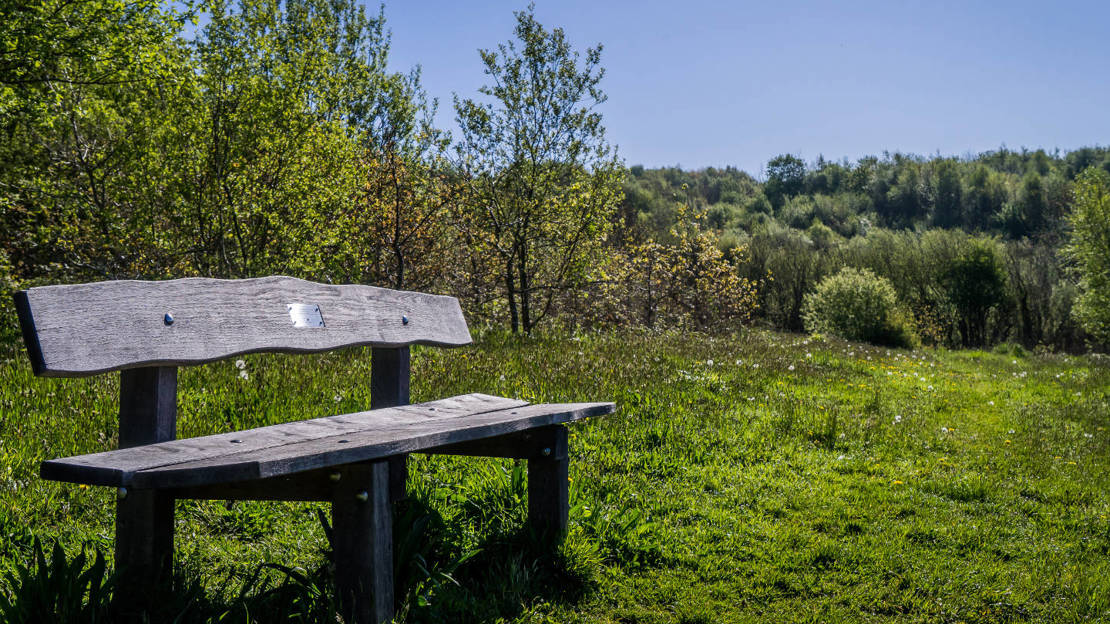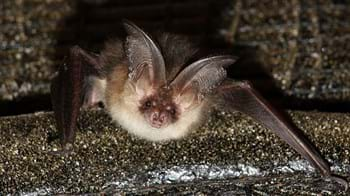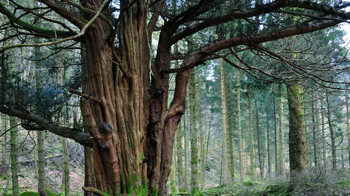
Hucking Estate
Hollingbourne

Woodland Trust wood group
- Hucking Estate
- Hucking Ext1
281.71 ha (696.11 acres)
TQ843575
Explorer 148
OS Landranger 188
Set in the Kent Downs Area of Outstanding Natural Beauty, Hucking Estate offers a vibrant mosaic of habitats, archaeologic features, dazzling bluebell displays, varied wildlife and breathtaking views.
Features
- Parking at site
- Public access
- Spring flowers
- Waymarked walk
- Grassland
- Broadleaved woodland
How to get to Hucking Estate
The Hucking Estate (281.71 hectares/696.12 acres) is located around the village of Hucking, with Hollingbourne just over 3km (two miles) to the south and the centre of Maidstone approximately 15.2km (9.5 miles) away, in the Kent Downs Area of Outstanding Natural Beauty.
The Estate runs to the escarpment of the North Downs along the southern boundary, which on a clear day affords fantastic views across the Weald of Kent.
From Junction 7 of the M20, take the A249 towards Sittingbourne for approximately 7.1km (4.4 miles). Turn right, following the brown tourist signs for Hucking Estate.
Remain on this narrow road for approximately 3.2 km (2 miles), turning left onto Church Road opposite the Hook and Hatchet Inn. The Woodland Trust car park is a further 1.2 km (0.75 miles) from the Hook and Hatchet Inn and is to the east of Hucking village on Church Road.
The road network within the area to access the Hucking Estate is mostly single track and twisty narrow lanes not suitable for high volumes of traffic or for large vehicles or coaches.
The nearest train station is at Hollingbourne which is around 5km (3 miles) from the wood.
Visit National Rail for more information.
The nearest bus stops are at Hollingbourne Church, 4km (2 and a half miles) from the wood, and Hollingbourne train station, 5km (3 miles) away.
Visit Traveline for more information.
Facilities and access
There are 13 possible entrances into Hucking Estate, seven of them on Public Footpaths with pedestrian-only kissing gates for access. The main entrance points are from the car park off Church Road, Hucking where an all-access kissing gate leads onto the path network.
There are two waymarked trails to follow – a short one and a longer one. The short ‘blue’ route is around 1.7km (just over a mile) and takes approximately 30 minutes. The longer ‘red route’, known as the Landscape Trail, is just over 4.8km (3 miles) and takes around 1½ hours.
A bridleway runs through the estate, accessed from a horse stile beside the Church at Hucking, to the track or Drove Road which links Colyers Went with Allington Farm on the Pilgrims Way.
There are also several permissive paths which can be used by horses. Get more information from Toll Rides Off-road Trust (TROT).
All paths within the fields and the woodland are unmodified grass and earth surface, which can get slippery and muddy when wet. The majority of the paths have gentle inclines and you may encounter cattle or sheep in the fields at various times during the year.
There is a car park at the entrance off Church Road with space for around 12 cars. There is a height restriction barrier at the entrance.
There is also parking available for customers at the Hook and Hatchet Inn.
Parking at Hucking Estate is limited. If the car parks on Church Road or at the Hook and Hatchet are full, please come back later. Please consider Hucking’s neighbours and do not block roads or driveways or park in gateways or on soft verges. Please also take any litter home with you.
The nearest public toilets with disabled and baby changing facilities are located at the M20 Maidstone Services off Junction 8, approximately 7.2km (4.5 miles) from Hucking Estate car park.
Wildlife and habitats
Animals
Hucking Estate supports 10 threatened bird species. 21 species of butterfly have also been identified here, including the marbled white which has been absent from Hucking for many years.
Bats such as Daubenton's, brown long-eared and Natterer’s inhabit the ancient semi-natural woodland using two old disused chalk pits to roost.
Trees, plants and fungi
The ancient woodland areas contain a mix of oak standards and mixed broadleaved coppice areas of hornbeam, field maple, ash and hazel, with some areas of pure sweet chestnut. The areas of new native woodland were planted with pedunculated oak, hornbeam, silver birch and many more broadleaved species, as well as woody shrubs like common hawthorn and wayfaring.

Dedicate at this wood
This wood is one of more than 50 across the UK where it's possible to dedicate trees, benches or larger areas of woodland. Mark a special occasion or celebrate the life of a loved one with a meaningful gesture that lasts.
Choose a dedicationHabitats
When we purchased it in 1997, the Hucking Estate consisted of 72 hectares (180 acres) of woodland and 158 hectares (390 acres) of arable land. A further 47.14 hectares (116.47 acres) of grassland and ancient woodland was purchased in 2017.
Since 1997, in close consultation with local people, we have embarked upon a ground-breaking restoration project to convert a part of the arable land back into native grassland and to plant other areas with native trees to protect the ancient woodland areas. We’ve also been working to link up many of these small areas of ancient woodland and retain areas of species-rich chalk grassland habitat where it is established.
About Hucking Estate
People have made their homes along the foot of the escarpment of the North Downs, at the southern edge of what is now the Hucking Estate, for thousands of years. The Romans and then the Jutes created farmsteads, villages and towns evolved all the way through the Norman and medieval periods to become the villages and towns of today.
Grazing livestock on the chalk hills and slopes kept them free of scrub, which led to the mix of chalk grassland and woodland that exists today, though arable intensification during the latter part of the 20th century resulted in the loss of many hedgerows and woodlands from the estate.
Look out for the ancient droveway, likely made by the Jutes to transport livestock. Hucking Estate is full of archaeological features, even the pond is a former ironworking site. You might spot medieval wood banks or some of the chalk pits where the chalk was mined to fertilise fields.
Acquisition
We acquired the Hucking Estate in 1997 and planted 180,000 trees over 185 acres were planted to create new woodland areas in 1998 and 1999. Another phase of tree planting started in 2010 to create a further 74 acres by 2015. In 2017, 47.14 hectares (116.47 acres) of land was purchased, including areas of species-rich chalk grassland and ancient woodland.

Your support matters
Two extensions to this wood was secured for the future thanks to your response to urgent appeals. Discover how you helped us bring more incredible habitat safely under our wing, and what the future holds for Hucking Estate.
See what we've achievedThings to do at Hucking Estate
Walking through the seasons
Experience the magic of the changing seasons with our seasonal walk guides and spotter sheets:

A lasting legacy
This wood is just one of many to have been protected by gifts in wills, securing it for generations to come. Your legacy gift could also make a real difference to woods, trees and wildlife.
Learn what your gift could mean


















































